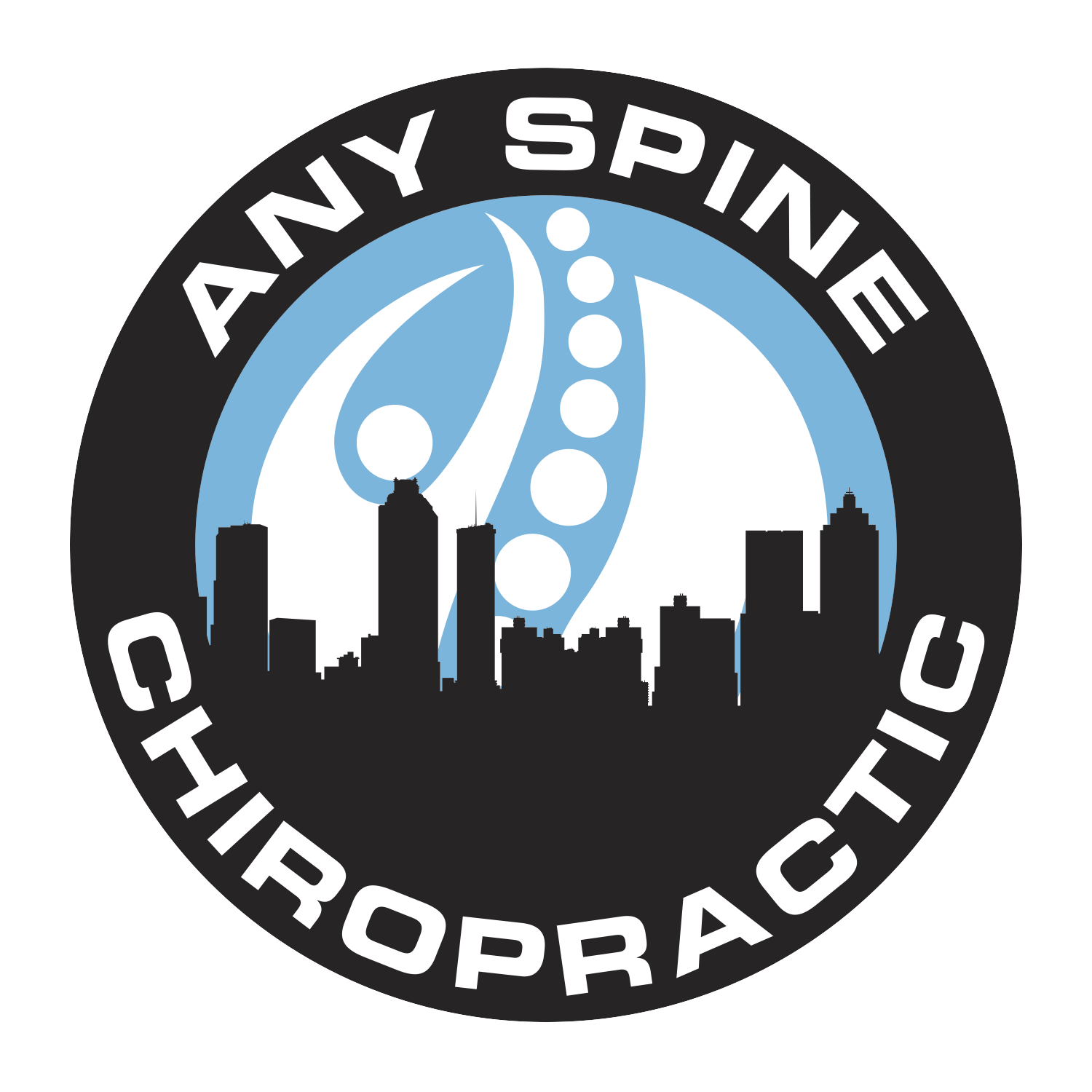Don’t Wait: Top Indicators to Visit a Chiropractor ASAP
Have you been struggling with relentless back pain that simply doesn’t subside, no matter how much you rest or which over-the-counter medications you try? This post delves into critical signs that signal the need for chiropractic therapy, an effective alternative strategy for managing pain and dysfunction without relying solely on pharmaceuticals. Whether you’ve sustained an injury leaving you with debilitating discomfort, face daily battles with neck stiffness, or suffer from recurrent headaches that disrupt your routine, a visit to the best chiropractor near me could be the solution. By reading further, you’ll discover how to identify these issues and the steps to take to start on the path to recovery and improved quality of life. Consider scheduling an appointment through this link.
Key Takeaways
- Chiropractic adjustments can alleviate pain and restore movement without reliance on medication
- Persistent joint pain and swelling may suggest deeper issues requiring professional chiropractic evaluation
- A proactive approach to spinal health through regular chiropractic care can enhance overall well-being
- Uneven gait and shoe wear often indicate spinal misalignments that can be corrected by a chiropractor
- Identifying a reputable chiropractor involves researching patient reviews and verifying credentials
Recognizing Persistent Back Pain That Won’t Go Away

As a chiropractor in Atlanta, I often see patients who don’t realize that their back pain is a sign of a deeper health issue. Persistent discomfort can derail daily activities and often indicates that it’s time to seek professional help. I utilize effective methods geared towards addressing issues from a simple slip and fall to chronic misalignments. In the following sections, let’s look at how to identify when back pain may be more serious, examine the impact it has on your life, and explore the chiropractic solutions that can provide relief.
Understanding When Back Pain Signals a Deeper Issue
In my professional experience, back pain complementary to neck pain can be a significant indicator that a consultation is warranted, particularly if the discomfort persists for more than a week. This combination often suggests that your spine may require a spinal adjustment. Such adjustments are carefully designed to realign your body, thus mitigating pain and improving function. In addition, patients should consider reviewing their health insurance plans, as many cover chiropractic care, offering a cost-effective avenue to address spinal concerns.
When patients come to me with concerns beyond general soreness—when they mention shooting pains, restricted flexibility, or a lingering discomfort that alters their posture—it’s crucial information that guides my assessment. Spinal manipulation, which is a core part of my practice, can often provide the relief they seek. Through years of fine-tuning my craft, I have seen firsthand how targeted manipulations can ease pain and facilitate a quicker return to one’s daily routine. This information is essential in creating a tailored treatment plan that aligns with my patients’ health goals.
How Chronic Discomfort Affects Daily Activities
Chronic discomfort in your back and neck can lead to a decrease in productivity, and hinder your ability to engage in everyday tasks. Over time, experiencing continuous pain can transform a simple errand into an ordeal, altering your quality of life. Many of my patients have found that incorporating alternative medicine approaches, such as joint manipulation and targeted massage, into their pain management regimen has been instrumental in restoring their daily function.
When the underlying problem of persistent pain isn’t addressed, it can exacerbate other health issues, triggering a cascade of complications: improper posture may lead to joint degeneration, and untreated back pain can restrict mobility, which often prevents active lifestyles. Through my expertise in chiropractic care, I have helped patients overcome these challenges by personalizing treatment plans which may include safe, non-invasive techniques like spinal adjustments:
- Evaluating the root cause of back and neck pain
- Applying tailored massage therapies to relieve tension
- Performing precision joint manipulation for improved mobility
- Designing a comprehensive pain management strategy
Methods a Chiropractor Uses to Alleviate Back Pain
In my Atlanta chiropractic practice, I have often treated headaches that stem from spinal issues, skillfully applying manual therapy to not only alleviate the headache but also address its underlying cause. Indeed, manual therapy is a powerful method I utilize for patients dealing with various ailments such as sciatica and sports injuries. This hands-on technique involves different approaches, like adjustment and soft tissue therapy, promoting healing and effectively reducing discomfort. For those interested in the benefits of combination therapy involving massage and chiropractic care, here is a detailed exploration: massage and chiropractor care benefits.
Exercise is another cornerstone of chiropractic care I prescribe for sustained recovery. By combining spinal adjustments with a customized exercise program, my patients experience significant improvements in flexibility and strength, which not only relieve their current pain but also guard against future injuries. To effectively manage conditions like sciatica, exercises tailored to the individual’s condition play a pivotal role in their journey to wellness:
- Developing a set of stretches for increased flexibility
- Recommending strengthening exercises for core stability
- Guiding patients on proper posture to prevent recurring pain
- Creating dynamic warm-ups suited for sports-related activities
Back pain often walks hand-in-hand with another unwelcome companion: neck stiffness. Let’s turn our attention to the signs of neck discomfort that are just as demanding of our vigilance.
Noticing Frequent Neck Stiffness or Pain

Neck stiffness and pain are alarm signals, prompting a review of your medical history and physical activities. These symptoms, often exacerbated by today’s screen-intensive lifestyle, may impede your range of motion and even foster migraines. Recognizing such signs and symptoms is pivotal for prompt chiropractic intervention. I specialize in pinpointing sources of neck discomfort, including the impact of ‘tech neck’, and offering treatments that sidestep the need for opioids through corrective chiropractic techniques. This subsection delves into effective chiropractic methods aimed at addressing and relieving persistent neck strain.
Causes Behind Neck Discomfort and Limited Mobility
In my day-to-day practice, I frequently encounter patients whose neck pain stems from overlooked daily habits that impose strain on their nervous system. The causes range from sustained poor posture while using computers—a condition often referred to as ‘tech neck’—to physical strain from repetitive movements. Such habits can disrupt the intricate science of spinal alignment, leading to discomfort and reduced mobility. As a result, the preservation of spinal health through regular exams becomes paramount to managing pain without over-reliance on medication. Neck pain help is available for those suffering from these issues.
Another culprit that I consistently identify during patient assessments is the impact of stress on the body’s musculoskeletal system. This stress can lead to involuntary tightening of the neck muscles, impeding movement and causing substantial discomfort. Understanding that one’s psychological state can have physical manifestations is crucial in the field of chiropractic science. Effective management of these symptoms often involves a combination of spinal adjustments to address mechanical issues and guidance on stress reduction techniques, ensuring a comprehensive approach to wellness.
The Impact of Tech Neck in Today’s Society
In my chiropractic practice, I’m seeing a growing number of individuals grappling with ‘tech neck,’ a condition precipitated by continuous use of technology devices. This modern ailment doesn’t just cause neck stiffness and discomfort but can also adversely affect the neurology of the cervical spine. As nerves become compressed due to poor posture, patients might experience a spectrum of symptoms from headaches to arm weakness—a clear sign that the quality of life is being undermined.
The repetitive strain of looking downward at screens for extended periods is not merely a soft tissue concern; rather, it’s a multifaceted profession-wide challenge that we face today. Addressing ‘tech neck’ requires not just chiropractic intervention but also patient education on maintaining proper posture and taking regular screen breaks. From a chiropractor’s standpoint, reversing these stressors on the spine is pivotal to preventing chronic nerve-related disorders and ensuring a life free from avoidable neck pain. For more details, visit chiropractic solutions desk job posture.
Chiropractic Techniques for Relieving Neck Strain
In my Georgia practice, applying diversified adjustments has shown remarkable results in alleviating neck strain, especially where shoulder tension contributes to the pain. Adjusting the cervical spine’s alignment relieves pressure on nerves and muscles that can radiate discomfort to the arms or even mimic whiplash symptoms. These precise adjustments offer immense relief and are a primary technique I utilize to enhance mobility and reduce pain for my patients.
I also focus on a multifaceted approach when treating neck stiffness, incorporating soft tissue therapy to complement the mechanical alignment. This involves applying intentional pressure to relieve muscle tightness, fostering an environment conducive to healing. I have seen how these tailored chiropractic solutions can significantly ease symptoms and consistently support individuals in swiftly regaining their range of motion and comfort—an essential aspect of their overall well-being.
The discomfort in your neck may not just be from strain. If the pain sharpens, it could be the mark of a deeper injury. For more information on this, you might want to explore neck pain help.
Experiencing Sharp Pain After an Accident or Injury

If sharp pain follows an accident or injury, it’s crucial to identify the symptoms that demand immediate attention. In my practice, I’ve guided countless patients through a physical examination to assess injuries, especially after car accidents or falls. Ensuring your body has been thoroughly evaluated and properly adjusted by a health care professional is fundamental for recovery. I understand the importance of restoring motion and will discuss how chiropractic care enhances the healing process for common injuries.
Identifying Symptoms That Require Immediate Attention
Should you suffer sharp pain following an accident, it’s a clear sign that a professional assessment is warranted, particularly when natural healing methods like naturopathy haven’t eased your discomfort. As someone well-versed in the intricate details of human anatomy, I can help identify if your pain is a symptom requiring immediate chiropractic care. Drawing on the rigorous standards set by the National Board of Chiropractic Examiners, my approach ensures that each patient receives a thorough evaluation and appropriate treatment.
Effective communication between patient and chiropractor is essential, particularly when discussing symptoms that might indicate underlying musculoskeletal damage or misalignment. In cases where traditional osteopathy or other conservative treatments have not resolved an issue, a more specialized chiropractic approach might be necessary. I leverage my expertise to provide not just temporary relief, but a strategy aimed at long-term recovery and rehabilitation:
Common Injuries From Car Accidents and Falls
In my Atlanta chiropractor practice, I frequently see patients with injuries resulting from car accidents and falls. These incidents can cause a range of musculoskeletal damages, such as whiplash, herniated discs, or sprains, which impact the soft tissue and disrupt the delicate balance of physiology. These conditions, left unaddressed, can worsen over time and impact overall health, making prompt treatment by a primary care provider or chiropractor essential.
Understanding the type of injuries that occur can guide patients to seek appropriate care:
- Whiplash typically manifests as neck pain and stiffness following a sudden impact.
- Herniated discs can cause sharp, radiating pain or numbness, frequently occurring in the lower back or neck.
- Sprains and strains may result in limited mobility and persistent discomfort.
It is my role to accurately assess these conditions and administer the necessary chiropractic adjustments, facilitating the body’s natural healing process.
How Chiropractic Care Assists in Recovery
As a chiropractor, I have witnessed numerous patients find solace in chiropractic care as a pivotal part of their recovery after an accident or injury. Timely chiropractic evaluation and treatment can be instrumental in avoiding the need for invasive procedures such as surgery, especially in cases where traditional medical interventions are not sufficient. My approach often mitigates issues like leg pain which, if left untreated, could lead to further complications down the line.
In instances where patients are concerned about conditions like osteoporosis, I ensure their treatment plans are adjusted accordingly. The non-invasive nature of chiropractic care, when administered by chiropractors close by, lends itself particularly well to individuals seeking to strengthen and rehabilitate their bodies without aggravating existing conditions. By employing targeted manipulation techniques, I am able to facilitate a patient’s return to optimal health, reducing the likelihood of chronic pain and improving overall quality of life.
The sharp pain is just one signal that your body is out of balance. Another warning is the throb of ongoing headaches, a battle on its own.
Suffering From Recurring Headaches or Migraines

Headaches and migraines can be debilitating, and often, their recurrence is a sign that your spinal health may be out of balance. In my years of chiropractic training, I’ve seen significant links between headaches and cervical spinal alignment, especially during pregnancy. Natural methods can play a key role in reducing their frequency, but it’s also critical to know when to schedule a professional evaluation. As a chiropractor, I prioritize accessibility in my practice for conditions like carpal tunnel syndrome, ensuring my care is available to those in need. If your head pain persists, it’s imperative to seek help; let’s explore these pathways to relief.
Links Between Spinal Alignment and Headaches
Recurring headaches and migraines may often indicate a misalignment in the cervical spine—a concept long emphasized since the foundation of chiropractic care by Daniel David Palmer in the United States. Through careful assessment and precise adjustments, I’ve seen remarkable improvement in patients dealing with such types of pain. My approach, grounded in the intricate relationship between spinal health and neurological function, has been pivotal in providing relief for those who initially thought their discomfort was unrelated to their spine.
The link between the neck’s condition and headaches is supported by a wealth of data indicating that strains such as a sprain or consistent wrist action can provoke compensatory changes in spinal alignment, leading to tension headaches. Addressing these underlying issues, especially when the spine’s misalignment impinges nerves, can mitigate the severity and frequency of these headaches. This reinforces the importance of seeking chiropractic care for not only immediate relief but also long-term prevention of migraine recurrence:
Natural Approaches to Reducing Headache Frequency
As a chiropractor in the bustling metro Atlanta area, I’m well-acquainted with the statistics: a substantial number of individuals suffer from headaches related to stress. In my practice, I emphasize natural methods, such as relaxation exercises and ergonomics at the workplace, which have proven effective in reducing the frequency of these headaches. Since stress is a common headache trigger, I often recommend techniques like deep breathing exercises and regular stretching to my patients; these simple practices can have a profound impact on overall well-being.
A valid chiropractic license equips me to offer strategies that alleviate the physical manifestations of stress, known to contribute to recurrent migraines and headaches. Optimizing the work environment for proper posture and ergonomics is another crucial step in headache prevention. Implementing ergonomic assessments for my patients has led to improvements in their comfort and a notable decline in headache occurrences:
When to Seek Professional Help for Head Pain
If you’re experiencing headaches that disrupt your daily life or you notice a pattern of chronic pain, consider it a sign that you should consult a chiropractor. Often, these recurring pains, magnified by stress or strain, may be linked to a chronic condition related to spinal health. As a primary care physician, I’ve seen how dietary changes and chiropractic adjustments can work in tandem, offering significant improvement for patients with persistent head pain.
When simple over-the-counter medications fail to provide long-term relief, it may be time to evaluate your symptoms with a professional. Recurring migraines or headaches warrant a thorough assessment to rule out any underlying issues that could be contributing factors. Remember, chronic head pain is not just a nuisance—it’s your body signaling for help, and as a chiropractor, I am specifically trained to address these issues, guiding patients towards a path of relief and wellness. For more details on how we can help, you can schedule an appointment with us.
Your head throbs, a constant reminder of the pain. Now, imagine a life where turning your head doesn’t bring the same fight.
Dealing With Limited Range of Motion

When my patients express concerns about diminishing flexibility or the grueling nature of once-simple tasks, it’s often an indication their body is signaling for professional help. With my doctorate and postgraduate education, I am equipped to conduct an in-depth evaluation and apply problem-solving techniques essential for their welfare. We’ll explore signs that your flexibility may be waning, recognize everyday activities that have become unnecessarily laborious, and detail the chiropractic methods that can restore your full range of motion.
Signs Your Flexibility Is Decreasing
In my practice, a common sign that flexibility is dwindling is when a patient describes hip pain during routine activities. This discomfort often stems from underlying inflammation that restricts movement. From research at institutions like Logan University, I’ve learned that such symptoms frequently point towards a deeper, root issue in the musculoskeletal system that requires expert evaluation and treatment.
Persistent stiffness upon waking or difficulty performing simple tasks are additional indicators of decreased flexibility. In my experience, these signs should not be dismissed, as they can accelerate the loss of mobility if left unchecked. Early intervention can make a substantial difference in preventing chronic conditions, and as a chiropractor, identifying and addressing these early symptoms is a key part of the care I provide. Joint manipulation for enhanced flexibility
Everyday Tasks Becoming More Challenging
When patients visit my practice mentioning that simple actions like reaching up to a shelf or bending down cause hip pain, it often hints at a restricted range of motion. Through my clinical experience and referencing peer-reviewed articles on PubMed, I have found that such limitations can often be traced back to joint or soft tissue irregularities that might not resolve without targeted intervention.
In my role, I apply precision when addressing the restricted movement of hands or elbows, which patients frequently report as a challenge during their day-to-day activities. These symptoms should prompt an immediate consultation, as skilled chiropractic care can help restore functionality and alleviate discomfort, allowing patients to return to their daily routines unimpeded.
Chiropractic Methods to Restore Movement
In my chiropractic practice, I adhere to strict board certification standards to ensure that every health care provider on my team is equipped to apply the most effective methods to restore movement. For individuals searching for “quiropácticos near me” or the nearest chiropractor, it’s vital to select a professional who can provide not just immediate relief but also a sustainable path to improved flexibility and mobility. My advanced education in the field allows me to tailor treatment plans to each patient’s unique needs, employing hands-on techniques that offer both immediate relief and long-term health benefits. Learn more about our approaches, including chiropractic for athletes performance recovery.
Restoring movement is at the heart of chiropractic care, and as a health care provider, I utilize my comprehensive education to apply precise, targeted adjustments that address the root causes of limited flexibility. Whether you’re struggling with joint stiffness or soft tissue tightness impacting your daily activities, my personalized approach to chiropractic treatment is designed to unlock your body’s natural healing potential. This focus on individualized care is what guides my patients towards regaining a full range of motion and enjoying an active, pain-free lifestyle. For more insights into how we approach these challenges, you might find our article on movement informative.
As we overcome the hurdles of restricted movement, we must not ignore another signal our bodies may send. Numbness or a tingling sensation in our limbs is next on our path to explore, a signpost pointing to an underlying issue waiting to be addressed. Numbness or a tingling sensation in our limbs is next on our path to explore, a signpost pointing to an underlying issue waiting to be addressed.
Feeling Numbness or Tingling in Limbs
If you’re feeling numbness or tingling in your limbs, it could be a sign of nerve compression, a condition that often prompts a visit to a chiropractor near you. My practice focuses on identifying possible causes of this nerve interference, how spinal health directly influences neurological symptoms, and the treatment options available to alleviate nerve pressure. As a chiropractor nearby, I bring practical insights into each of these areas, emphasizing the immediate value of seeking professional chiropractic care for such symptoms.
Possible Causes of Nerve Compression
In my clinic, patients often report numbness and tingling—a potential red flag pointing to nerve compression. These symptoms can emerge from a herniated disc exerting pressure on spinal nerves, or from conditions like stenosis where spinal canals narrow, constricting nerve pathways. If you’re experiencing such discomfort, seeking help from the nearest joint chiropractic care can be decisive in pinpointing the cause and working towards relief.
From my observations, the onset of these sensations might also result from repetitive activities or an injury that causes misalignment of the spine or joints, known technically as subluxations. Timely care from the nearest the joint chiropractic can be critical. With precise adjustments and therapy, we can address the root issues, often providing patients with significant improvements and preventing further nerve damage.
How Spinal Health Affects Neurological Symptoms
In my daily practice, I encounter patients who experience numbness or tingling in their limbs, which often indicates underlying issues with spinal health. A healthy spine is crucial for proper nerve function, and any misalignments can disrupt nerve signals, leading to these neurological symptoms. When the spine is not properly aligned, it can compress nerves and interfere with the communication between your brain and the rest of your body.
Addressing spinal health is essential for the resolution of neurological symptoms like numbness or tingling. In my experience, through corrective chiropractic care, I’ve helped patients relieve nerve pressure, which is often the root cause of these unsettling sensations. Here are the key steps I follow when a patient presents these symptoms:
- Conducting a thorough examination to assess spinal alignment and nerve function.
- Identifying the specific areas of nerve interference.
- Implementing a personalized treatment plan that may include spinal adjustments and other therapies to alleviate the nerve compression.
These targeted actions not only provide relief from current discomfort but also aid in preventing the recurrence of such symptoms. In essence, maintaining spinal health through chiropractic care is a proactive approach to ensure the nervous system functions optimally, fostering overall well-being.
Treatment Options to Relieve Nerve Pressure
In my chiropractic practice, I commonly employ spinal decompression therapy to relieve nerve pressure effectively. This non-surgical treatment gently stretches the spine, creating space and alleviating pressure on the affected nerves. The outcome is often a significant reduction in the numbness and tingling sensations that many patients report, paving the way for enhanced neurological function and comfort.
Additionally, I often combine decompression with other modalities like targeted exercises and cold laser therapy. These treatments foster an optimal healing environment: exercises strengthen the supporting muscles, while cold laser therapy reduces inflammation and accelerates tissue repair. By applying a multifaceted approach, I help patients achieve lasting relief from nerve compression symptoms:
Numbness in your limbs can be the silent herald of deeper issues. Let’s turn our gaze downward—observe the soles of your shoes for uneven wear, another clue your body is speaking. Fix your neck pain and hand numbness
Noticing Uneven Wear on Shoe Soles

In my chiropractic experience, observing uneven wear on your shoe soles can reveal a great deal about your spinal alignment. Such disparities often indicate an uneven gait, pointing to possible muscular imbalances that could stem from poor posture. In the forthcoming sections, I’ll discuss what your walking patterns may be telling you about your spinal health, examine how posture contributes to muscular imbalance, and offer corrective measures to enhance your gait and overall wellness.
What Uneven Gait Says About Spinal Alignment
Uneven wear on one’s shoe soles is often a telltale sign of an imbalanced gait, which may suggest underlying issues with spinal alignment. As a chiropractor, I frequently encounter patients whose inconsistent gait patterns contribute to back pain, hip discomfort, or even knee strain. These physical discrepancies usually reflect misalignments that require professional assessment and adjustments to help reestablish a balanced posture and gait, ultimately leading to improved spinal health. For more information on how these adjustments can make a difference, visit our chiropractic page.
In my practice, observing a patient’s gait plays a crucial role in diagnosing spinal misalignments that could be affecting their overall health. An uneven gait can compress nerves and strain muscles unevenly, exacerbating back pain and potentially leading to chronic issues if left unaddressed. Immediate consultation with a chiropractor, upon noticing such wear, can not only provide relief but also prevent further degeneration of spinal well-being.
The Role of Posture in Muscular Imbalance
In my chiropractic practice, I’ve observed that poor posture can significantly contribute to muscular imbalances, often leading to uneven wear on shoe soles. This condition is not just an indicator of spinal misalignments but also a cautionary signal that your body’s muscular system is compensating in unhealthy ways, potentially setting the stage for chronic pain and dysfunction. Custom orthotics 3D laser scanned for maximum comfort and support.
Addressing improper posture early on through chiropractic assessment and adjustments can realign your spine, reestablish muscular balance, and correct your gait. As a result, this not only alleviates current discomfort but also serves as a preventative measure against further joint and muscular issues that may arise from continued imbalanced movement patterns.
Corrective Measures to Improve Walking Patterns
In my chiropractic practice, I’ve successfully treated patients with uneven shoe wear by using spinal adjustments and posture correction exercises to improve their walking patterns. These corrective measures focus on the root cause of the imbalance, providing long-term solutions rather than temporary fixes, and ensure that my patients can enjoy day-to-day activities without discomfort or the risk of injury. I often remind patients that proactive care is crucial, and scheduling a chiropractic evaluation at the first signs of uneven wear can prevent more serious spinal issues from developing.
Analyzing and retraining gait patterns is another service I provide to address this issue directly. By observing how a patient walks, I can identify specific postural or muscular weaknesses that require intervention. With personalized exercise regimens and regular follow-ups, I’ve witnessed remarkable improvements in my patients’ gaits, which translates to a significant reduction in the risk of future musculoskeletal complications that can stem from improper walking patterns.
The soles of your shoes tell a story of imbalance. Listen closely — now your joints speak of pain and unwelcome swelling.
Experiencing Joint Pain and Swelling

Joint pain and swelling are symptoms that often bring individuals to my chiropractic clinic. Differentiating between normal signs of aging and potentially harmful symptoms is critical for maintaining long-term mobility and joint health. In this section, we will address how joint issues can hinder movement and discuss the profound benefits chiropractic adjustments can offer for joint preservation. You’ll find practical insights into recognizing when your body might be signaling for professional care, as I guide you through the essential steps towards enhancing your joint health.
Differentiating Between Normal Aging and Problematic Symptoms
Through my experience as a chiropractor, I’ve seen how the natural progression of aging leads to some wear and tear on the joints, but significant pain and swelling should not be dismissed as typical aging symptoms. When you experience joint stiffness that impedes your morning routine or swelling that doesn’t subside with basic remedies, it’s time to consult with a chiropractic professional. These can be signs of conditions like arthritis or a misalignment that, without proper intervention, could severely impact your mobility and overall health. Consider exploring joint manipulation for enhanced flexibility as part of your care.
Recognizing the difference between discomfort from an active day and persistent joint pain that restricts your movements is paramount. I often advise my patients that while occasional stiffness can be normal, pain that alters how you walk, grips, or even sleep suggests a deeper issue that may benefit from chiropractic evaluation and care. My goal is to help you maintain an active, pain-free lifestyle, and addressing these symptoms timely can be the key to achieving that.
Impact of Joint Issues on Overall Mobility
In my professional practice, I’ve often witnessed how joint pain and swelling can severely inhibit overall mobility, making everyday movement a challenging ordeal. Compromised joints impact your ability to perform simple tasks, from walking up stairs to grasping objects, and this functional limitation can affect not only your physical health but your mental well-being too. Seeking chiropractic care at the onset of these symptoms is crucial in mitigating damage and preserving your movement capabilities.
Observations in my clinic consistently reveal that joint issues lead to a compensatory change in how my patients move, which can worsen the condition over time. By offering targeted chiropractic adjustments and joint care strategies, I work to restore balance and relieve the stress on affected joints, empowering individuals to regain mobility and improve their quality of life without prolonged suffering. It’s my commitment to help patients navigate these challenges and enhance their overall musculoskeletal health.
Benefits of Chiropractic Adjustments for Joint Health
In my years of chiropractic practice, I have seen chiropractic adjustments bring significant relief to patients with joint pain and swelling. The adjustments not only reduce discomfort but also facilitate enhanced movement and joint function, directly tackling the inflammation that can hinder your daily life.
These adjustments work by restoring proper alignment to the body, which in turn alleviates pressure on nerves and tissues surrounding the joints. My patients often report a marked improvement in their range of motion following chiropractic care, which underscores its effectiveness in promoting joint health and overall wellbeing.
Joint pain and swelling can be relentless, driving many to the edge of frustration. It’s time to examine alternative solutions where medication is not the sole answer. Joint manipulation for enhanced flexibility might offer some relief.
Seeking Alternative Solutions to Medication
In my chiropractic practice, I encounter many individuals who are eager to manage pain without the permanent reliance on medications. They’re often seeking holistic approaches to enrich their health and foster natural healing processes. Each method of chiropractic care I offer centers on supporting and enhancing the body’s innate ability to heal itself—key elements that we will examine in the subsequent topics of this discussion.
Desire to Manage Pain Without Reliance on Drugs
In my chiropractic practice, the shift towards alternative pain management solutions is evident among my patients. Many express a strong desire to alleviate their discomfort without the persistent use of drugs, seeking methods that enable the body’s inherent healing capabilities and offer a more sustainable form of relief. As a healthcare provider, it is my duty to support this transition and guide those in my care towards safe, effective treatments that do not rely solely on medication. natural healing doctors and chiropractors enhance your wellness journey.
Chiropractic care is particularly beneficial for patients looking to address pain through natural, drug-free therapies. For instance, through spinal adjustments and corrective exercises, I have assisted patients in managing acute and chronic conditions effectively, substantially reducing their dependence on medication:
Exploring Holistic Approaches to Health
In my chiropractic practice, I consistently witness the profound effects of holistic health approaches on individuals seeking to manage pain without medication. By integrating chiropractic care with lifestyle modifications and natural therapies, I guide patients towards achieving optimal health and expediting their recovery process.
One essential aspect of holistic health is recognizing the body’s interconnected systems; a focus that I emphasize in patient treatment plans. Often, simple changes such as diet modification, stress management techniques, and ergonomic workplace adjustments have notable effects on pain reduction and general well-being.
How Chiropractic Care Supports Natural Healing
In my practice, I’ve witnessed the transformative power of chiropractic care in supporting the body’s natural healing processes. By focusing on spinal health and proper alignment, my approach enhances nerve communication, thereby facilitating the self-healing capabilities innate to every patient. This biological empowerment can lead to greater pain relief and functionality, often reducing the need for pain medication.
Chiropractic care restores balance within the body’s musculoskeletal system, crucial to natural healing. Through targeted adjustments, I relieve pressure on joints and nerves, which can diminish pain and improve mobility, setting the stage for the body to repair and strengthen itself. This holistic method champions the body’s resilience and natural recovery mechanisms, often surpassing the results of medication-dependent treatments.
Moving beyond medication opens a path to holistic health. Now, let’s focus on building a foundation for lasting wellness.
Wanting to Enhance Overall Wellness and Prevent Future Issues
As a chiropractor committed to optimal health, I emphasize the critical role of proactive health measures in maintaining your well-being. Welcoming regular chiropractic visits is a strategic approach to promote long-term health and avoid future ailments. In this section, we’ll explore the steps to identify and choose the most qualified chiropractor near you, ensuring you receive the best possible care for your journey to enhanced wellness.
Importance of Proactive Health Measures
In my practice as a chiropractor, I champion proactive health measures as a cornerstone to enhancing overall wellness and staving off potential health issues. By seeking regular chiropractic care, my patients are not only addressing their current discomforts but also taking preventive steps to maintain spinal health, which is fundamental to their bodily functions and everyday well-being.
When patients act before pain becomes a disruptive force, they’re able to enjoy higher quality of life and reduce the likelihood of future injuries. Regular spinal check-ups and adjustments can play a pivotal role in this process, enabling the body to function optimally and reducing the need for more intense interventions down the line: Regular spinal check-ups and adjustments
How Regular Chiropractic Visits Promote Long-Term Well-Being
Regular chiropractic visits are fundamental to maintaining spinal health and enhancing overall well-being. In my practice, I’ve observed that patients who commit to routine chiropractic care experience fewer episodes of discomfort, enjoy better posture, and report a more active lifestyle due to the preventive benefits of sustained spinal alignment and function.
Proactive chiropractic check-ups serve as an investment in long-term health, enabling early detection and correction of potential issues before they escalate. My focus is to establish an ongoing partnership with each patient, guiding them on a path where chiropractic care supports bodily harmony, facilitating an enduring state of wellness unencumbered by pain or mobility restrictions.
Steps to Find the Best Chiropractor Near You
Identifying a skilled chiropractor near you begins with research. I recommend starting with a thorough search online, paying close attention to reviews and testimonials from other patients. This feedback can provide insight into the chiropractor’s expertise and how they have successfully enhanced the wellness of others, ensuring you choose a professional who aligns with your health goals.
Once you’ve narrowed down your options, verify the chiropractor’s credentials and ensure they are in good standing with the state’s chiropractic board. Reach out to their office and inquire about their approaches to treatment and preventative care. An open dialogue with a potential chiropractic caregiver not only reassures you of their qualifications but also establishes a level of comfort and trust essential for a successful patient-practitioner relationship. For more information, you may want to contact us.
Frequently Asked Questions
How does back pain indicate I need a chiropractor?
Persistent back pain often signifies spinal misalignments or muscle tension that a chiropractor can effectively diagnose and treat with non-invasive techniques.
Can chiropractic care relieve my neck stiffness?
Chiropractic adjustments can effectively reduce neck stiffness by improving spinal alignment and relieving pressure on nerves.
Should I see a chiropractor after an injury?
Seeking chiropractic care post-injury can enhance recovery, address pain relief, and restore function, ensuring proper alignment and healing.
Can chiropractors help reduce headaches?
As a chiropractor, I often help patients manage tension headaches and migraines through spinal adjustments and posture correction.
What does uneven shoe wear suggest chiropractically?
Uneven shoe wear can often indicate unbalanced gait or spine alignment issues that a chiropractor may correct through targeted adjustments and therapy.
Conclusion
Recognizing the urgent signs that warrant chiropractic consultation is vital for preserving your spinal health and overall well-being. Persistent symptoms such as back and neck pain, limited mobility, headaches, or numbness signal that your body may need professional attention to prevent worsening conditions. Timely chiropractic care can alleviate these discomforts, restore proper alignment, and enhance the body’s natural healing potential. Don’t overlook these essential indicators; seeking a chiropractor’s expertise can be the key to maintaining an active, balanced, and pain-free lifestyle.





